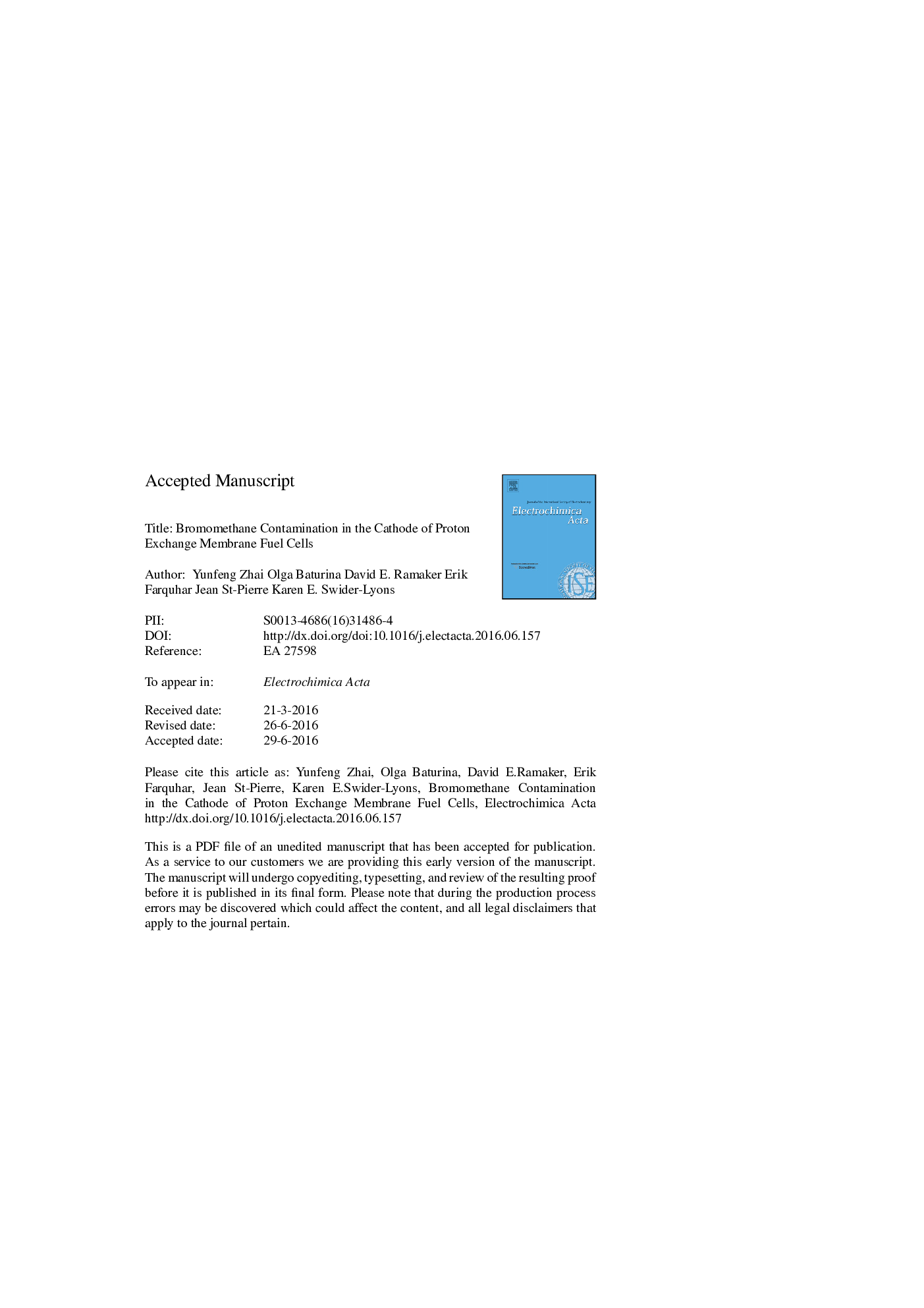| Article ID | Journal | Published Year | Pages | File Type |
|---|---|---|---|---|
| 6605756 | Electrochimica Acta | 2016 | 33 Pages |
Abstract
The effects of bromomethane (BrCH3), an airborne contaminant, on the performance of a single PEMFC are compared with that of another halocarbon, chlorobenzene. Under a constant current of 1 A cmâ2 and at 45 °C, 20 ppm bromomethane causes approximately 30% cell voltage loss in approximately 30 h, as opposed to much more rapid performance degradation observed with chlorobenzene. Electrochemical impedance spectroscopy, cyclic voltammetry, linear scanning voltammetry, and polarization measurements are applied to characterize the temporary electrochemical reaction effect and permanent performance effects. X-ray absorption spectroscopy is used to confirm that Br is adsorbed on the Pt electrocatalyst surface. We conclude that airborne bromomethane poisons a PEMFC in a different way from chlorobenzene because it is largely hydrolyzed to bromide, Brâ, which is then excluded from the Pt catalyst by the negatively charged Nafion ionomer. The little Brâ and bromomethane that adsorbs on the Pt surface can be partially removed by cycling but causes some irreversible surface area loss.
Related Topics
Physical Sciences and Engineering
Chemical Engineering
Chemical Engineering (General)
Authors
Yunfeng Zhai, Olga Baturina, David E. Ramaker, Erik Farquhar, Jean St-Pierre, Karen E. Swider-Lyons,
